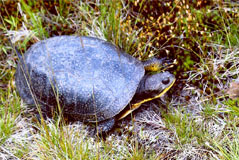
Nature and science
Rideau Canal National Historic Site
Along its 202 km route from Ottawa to Kingston, the Rideau Canal passes through four distinct natural landscapes, each of which possesses its own particular scenic beauty:
- The Ottawa Clay Plain between Ottawa and Merrickville is a flat, glacial till plain.
- Between Merrickville and Rideau Ferry lies the Smiths Falls Limestone Plain, an area of shallow soil and exposed limestone.
- The Frontenac Axis extension of the Canadian Shield creates a rugged landscape between Rideau Ferry and Kingston Mills, characterised by a wild and untamed appearance.
- The final landscape is the Napanee Plain, another area of shallow soil and exposed limestone, lying to the south of Kingston Mills.
The Rideau Canal is actually two separate river systems:
- The Rideau River originating in Big Rideau Lake and flowing north-easterly to Ottawa,
- The Cataraqui River starting at Newboro Lake and flowing south-westerly to Kingston.
The lift from Kingston to Upper Rideau Lake (the highest point on the system) is 50 m (164 ft.) in 14 locks. The lift from Ottawa to Upper Rideau Lake is 83.2 m (273 ft.) in 31 locks. The watershed of the Rideau is much the larger of the two rivers, 4,000 square km, compared to the 910 square km drained by the Cataraqui.
To create a navigable waterway, the builders of the canal significantly altered the natural environment through which it passed. In particular, the construction of a number of dams and weirs to control water levels resulted in drowned lands along the length of the canal, providing ideal conditions for fish such as largemouth bass and creating extensive wetland areas which have become a rich environment for a wide variety of plants and animals. The canal's wetlands are home to 42 rare plant species and rare animals like the small-footed bat. The waterways are home to one of the most diverse fish communities in Canada.
The Rideau is still an operating canal. Boaters travelling between Kingston and Ottawa pass along the rivers and lakes of the waterway, their journey made possible by the 47 locks of the system. Control of water levels to ensure sufficient draft in the navigation channel is vital to safe boating and this is accomplished through a series of reservoir lakes where, in the springtime, water from the winter snows is captured as a source of supply to the canal when necessary. Water management is a delicate balancing act to maintain adequate navigation levels while avoiding harm to the natural environment.
The Rideau Canal ecosystem, although generally healthy, is subject to a variety of ecological stresses resulting from its increased use for boating and fishing and from increased pressure for shoreline development. The long term cumulative impact is estimated to be significant as many of these impacts are expected to continue or increase over time. The Rideau Canal works in close contact with the municipalities of the area, with other government agencies, and with concerned citizens to protect the natural heritage of the waterway.
Species at risk

A variety of ecosystems can be found along the Rideau Canal which are home to a rich diversity of species. Some of these receive special protection under the species at risk act. Visit the Species at Risk webpage to learn more.
- Date modified :